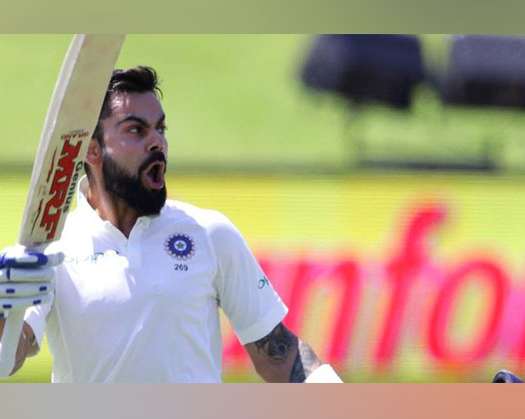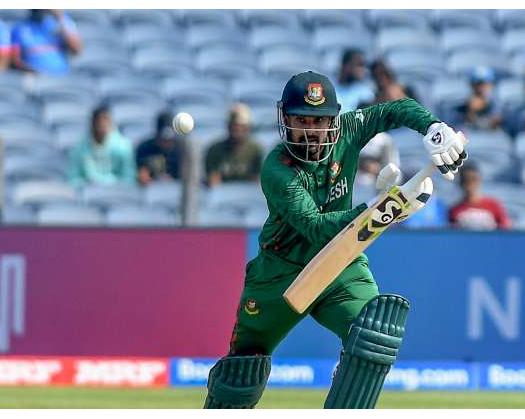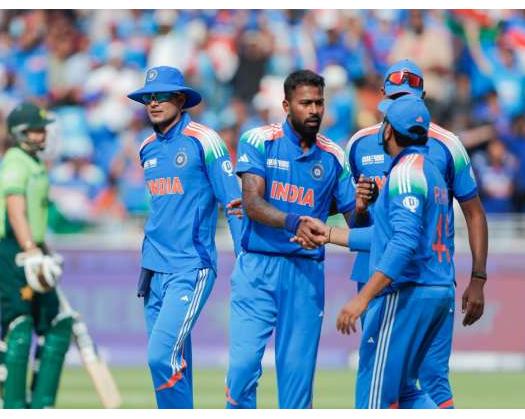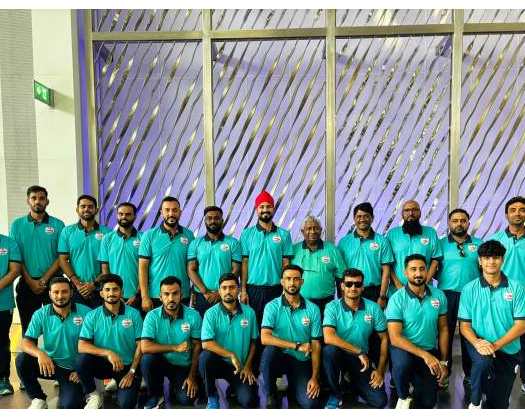New Delhi: As India prepares to embark on its inaugural Test match at the Optus Stadium in Perth for the highly-anticipated Border-Gavaskar Trophy, the world will be closely observing Virat Kohli, who is currently navigating through a significant form slump in his illustrious career.
Known for his exceptional performances and celebrated on Australian soil, Virat has consistently been a source of excitement, generating widespread attention and high viewership numbers each time he steps onto the Australian cricket field. Although he has previously met with the weight of expectations, this time around, his position as a key player is at stake. He is not only striving to regain his form and overcome his technical challenges but also to secure his place in Test cricket as younger, emerging talents vie for their opportunity to play in the Test format following a transition from the current crop of stars to the next generation.
In the span of 19 matches across various international formats this year, Virat has managed to score a mere 488 runs at an alarmingly low average of 20.33, with only two half-centuries in 25 innings and his highest score being 76.
This slump in Test performance has been particularly disheartening, as it starkly contrasts with his illustrious career in the longest format of the game. Between 2016 and 2019, Kohli achieved some of his greatest successes, scoring 4,208 runs in 43 Tests and 69 innings with an average of 66.79, including 16 centuries and 10 fifties. It was during this period that he achieved a remarkable feat of scoring seven double centuries, a record that still stands.
However, since the start of 2020, Virat has experienced a prolonged period of form decline in the white team, scoring 1,938 runs from 34 Tests at an average of 31.68, with just two centuries and nine fifties.
His recent performances have been particularly challenging at home in Tests against Bangladesh and New Zealand, where he managed to score just 192 runs in 10 innings at an average of 21.33, including just one fifty.
In the latest ICC Men's Test Batting Rankings, Kohli has slipped out of the top-20 list for the first time in a decade.
The veteran player faces a critical challenge to maintain his position, with critics eagerly awaiting his dismissal. However, for Virat, the Australian cricket field could once again become the arena for an ultimate redemption story, a narrative that has unfolded in the past.
In 2012, the beginning of his association with Australia during the 2011-12 Border-Gavaskar Trophy marked the start of a significant chapter in his career. Following a disappointing tour of West Indies in 2011, where he averaged just 15.20 after scoring only 76 runs in five innings, there were doubts about whether Virat, a seasoned white-ball player, could replicate his earlier successes in red-ball cricket.
Virat appeared poised to be dropped from the Tests following his initial two matches in Australia, recording a total of 43 runs across four innings, with his highest score being 23. His performance improved in the subsequent two Tests, achieving scores of 44 and 75 at Perth before finally making his debut in Adelaide, where he delivered a remarkable 116 runs in 213 balls, showcasing his characteristic flair and confidence. Although he was unable to prevent a defeat, Virat's display hinted at a promising future in Test cricket. He distinguished himself among the more established and experienced players, including legends like Sachin Tendulkar, Virender Sehwag, VVS Laxman, Rahul Dravid, and MS Dhoni, becoming the sole Indian player to score over 300 runs in the series with an average of over 37. His idol, Sachin Tendulkar, followed closely behind with 287 runs in eight innings, including two fifties.
This series marked a pivotal moment for Virat, securing his place in the Test team. Over the next two years, he continued to produce significant performances. The tours to South Africa, New Zealand, and domestic matches highlighted Virat's versatility in batting across various tracks and conditions.
However, the 2014 tour to England proved to be a challenging period for Virat. The young player struggled against the skilled spinners James Anderson and Stuart Broad, often facing difficulties in dealing with the swing and seam of the ball, which often resulted in edges to the keeper or fielder behind him. The pace duo targeted his vulnerabilities, particularly his weak areas, notably the outside off-stump line, leading Virat to describe it as one of his most difficult tours. He managed to score just 134 runs across 10 innings with an average of 13.40, with his best score being 39. All of his wickets were taken by pacers.
Despite these challenges, Virat saw the next tour to Australia as an opportunity to demonstrate his resilience and adaptability, drawing on his earlier successes in similar conditions.
A formidable challenge lay ahead in the form of the Australian pace attack, which included Mitchell Johnson, Ryan Harris, Peter Siddle, and others. This formidable lineup posed a significant test for Virat, who was seen as a relatively inexperienced target.
However, the subsequent events marked a pivotal moment in Virat Kohli's illustrious career, elevating him to the status of a rising star in Test cricket. Beyond his prowess as a player, Kohli was poised to become a formidable captain, instilling a winning mentality within his team. His performance in the BBL was particularly noteworthy, as he adeptly dismantled the formidable Australian bowling at home, scoring 692 runs over eight innings with an average of 86.50. This included four centuries and a fifty, with his highest score of 169.
This success extended to his debut as captain, where he achieved twin centuries at Adelaide, scoring 115 and 141 runs respectively, despite facing a formidable challenge from the Australian team. This feat was particularly remarkable as it came during his first Test as captain, with teammate Rohit Sharma taking over for the injured Dhoni. Kohli's leadership and determination were evident as India narrowly missed out on a target of 364 runs on the final day, falling short by 48 runs. This display of tenacity and a relentless pursuit of victory had a profound impact on the team, especially after Dhoni's retirement from Test cricket midway through the series.
Between 2016 and 2019, Kohli cemented his position as a versatile legend, amassing over 10,000 runs, including numerous centuries and notable chase performances across various formats. The anticipation for his performance in the 2020 season was high, with the new decade heralded as a period of renewed success.
However, Kohli's form experienced a significant downturn, leading to speculation among former cricketers, fans, and the cricketing community about the cause of this sudden decline. His struggles against spin and deliveries outside the stumps became more pronounced. While some attributed these challenges to mere bad luck or misjudgments, the increasing number of dismissals highlighted his vulnerability to such slumps.
Before his 71st international appearance in the Asia Cup against Afghanistan on September 8, 2022, his first since 2019, Kohli had recorded 2,436 runs in 77 innings across 66 matches, maintaining an average of 34.30. Despite these challenges, Kohli managed to score his much-coveted ton in the Asia Cup, but there were doubts about his suitability for India's elite squad for the T20 World Cup 2022 in Australia. The emergence of younger, more aggressive talent in the Indian Premier League (IPL) raised questions about Kohli's role in the T20 format, with some doubting the effectiveness of his strategic, controlled approach.
Virat commenced the tournament with a T20I record, scoring an impressive 82 runs from just 53 balls during a critical run-chase against Pakistan at the Melbourne Cricket Ground (MCG), which was attended by a full house. It was Virat's capacity to establish a strong foundation and subsequently enhance the pace of scoring at opportune moments that secured India's victory in this memorable match. The veteran player would continue to excel in the T20 World Cup, clinching the title of leading run-scorer with an outstanding 296 runs across six innings, maintaining an average of 98.66 and a strike rate of 136.40. He achieved four fifties, further solidifying his reputation as a versatile and consistent batsman whose style of play is timeless.
This success set the stage for another remarkable batting performance by Virat, culminating in the 2023 50-over World Cup hosted in Australia. Following a dominant display against Pakistan at the MCG, Virat amassed 2,402 runs with an average of 63.21, including nine fifties and a record-breaking score of 186. The World Cup in Australia witnessed Virat break numerous records, scoring an unprecedented 765 runs in 11 innings, an average of over 95, including three centuries and six fifties. He also achieved the remarkable feat of becoming the first player to score 50 centuries in ODI matches, accomplishing this milestone in front of his idol, Sachin Tendulkar, at the Wankhede Stadium in Mumbai during the semifinal against New Zealand. Despite New Zealand's formidable reputation in ICC events, India emerged victorious in this intense match.
Now, nearly a year later, Virat finds himself in a critical situation. The outcome of his performance in the Border-Gavaskar Trophy could determine the duration of India's Test series against Australia. Virat has established a commendable record in Australia, scoring 1,352 runs in 13 Tests at an average of 54.08, including six centuries and four fifties in 25 innings. His highest score is 169.
In all formats across Australia, Virat has accumulated 3,426 runs at an average of 56.16, including 11 centuries and 19 fifties in 70 innings. His highest score is 169.
Will Australia's favorable conditions once again favor Virat? The answer remains uncertain, but only time will reveal the outcome.













